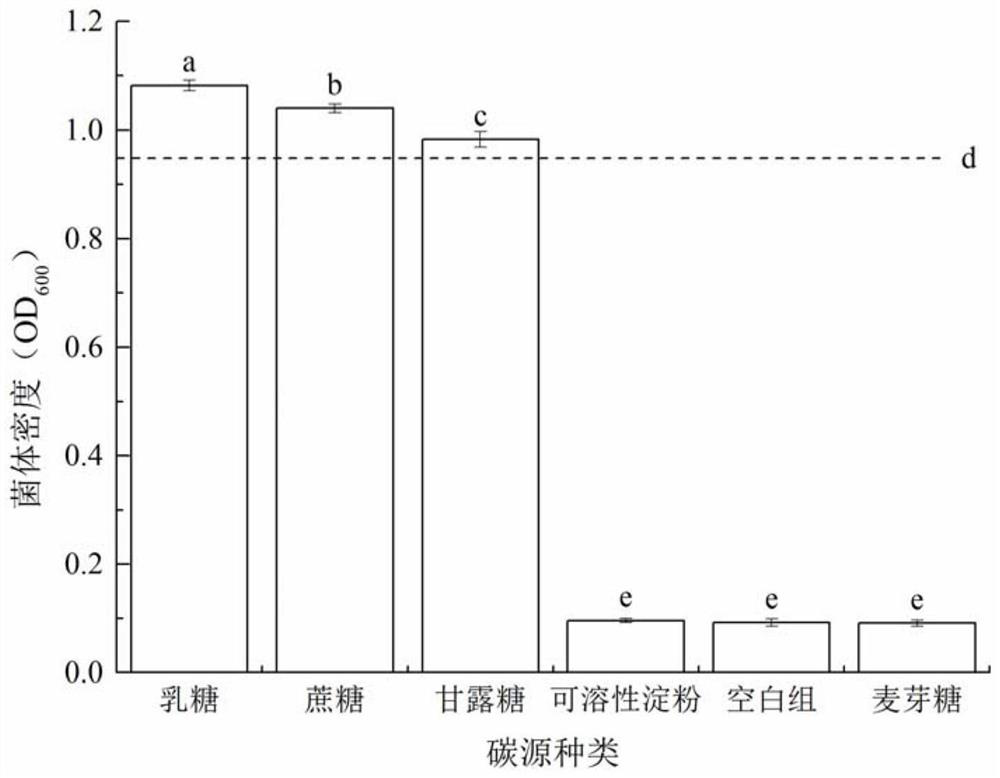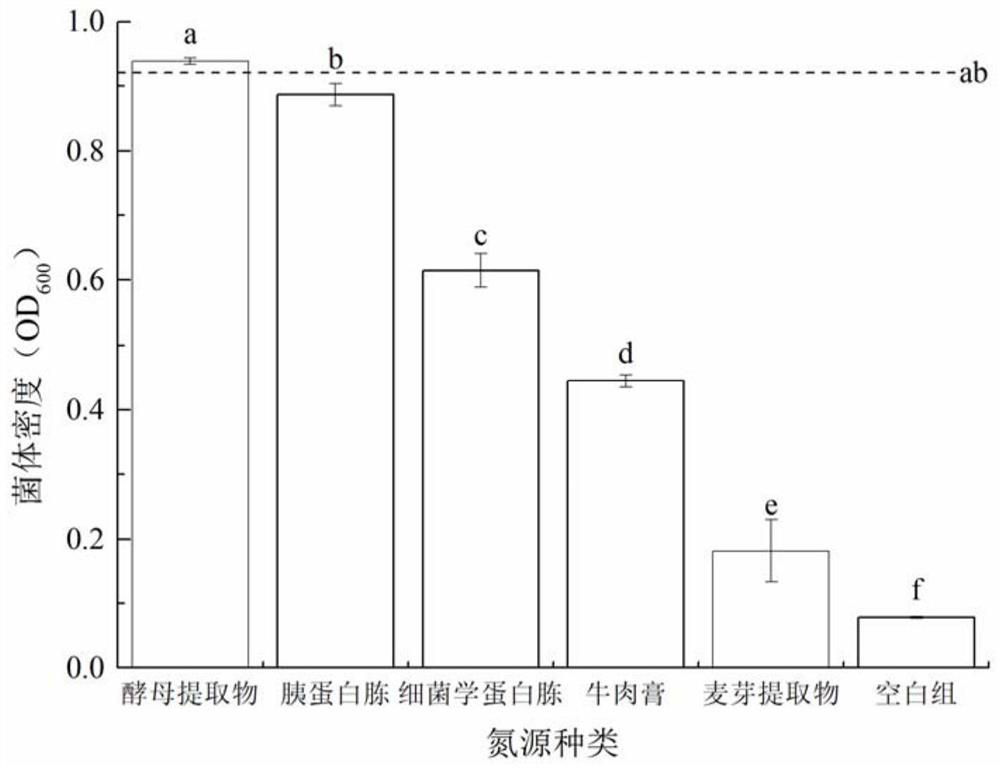A kind of streptococcus thermophilus and its propagation and cultivation method and application
A technique for streptococcus thermophilus and proliferation medium, which is applied in the field of Streptococcus thermophilus DMST-H2 and its proliferation culture, can solve problems such as insufficient optimization conditions, and achieves the advantages of low cost, outstanding antioxidant capacity, and increased viable bacterial count. Effect
- Summary
- Abstract
- Description
- Claims
- Application Information
AI Technical Summary
Problems solved by technology
Method used
Image
Examples
Embodiment 1
[0034] Example 1 A strain of Streptococcus thermophilus DMST-H2 derived from traditional fermented dairy products in China
[0035] This example is a strain of Streptococcus thermophilus DMST-H2 derived from traditional Chinese fermented milk, which is preserved in Guangdong Microbial Culture Collection Center (GDMCC for short) with the preservation number GDMCC 60642. The biological characteristics of the Streptococcus thermophilus (Streptococcus thermophilus) strain DMST-H2 are: streaked and separated on the MRS medium plate, cultivated at 37°C for 48 hours, the colonies are round, raised, with neat edges, milky white colonies, and the surface is wet and smooth . Gram-stained microscopic examination shows that it is a Gram-positive bacterium, spherical in shape, paired in pairs, with long chains and no spores. Physiological and biochemical test results showed that the strain KOH test was negative, catalase test was negative, facultative anaerobic, able to hydrolyze starch, ...
Embodiment 2
[0036] The separation and purification of embodiment 2 Streptococcus thermophilus DMST-H2
[0037] This example is a method for the isolation and purification of Streptococcus thermophilus DMST-H2 derived from traditional Chinese fermented milk. The method is carried out as follows:
[0038] (1) Shake the home-made yogurt sample in Inner Mongolia with a vortex shaker for 5 minutes. Under sterile conditions, draw 0.5mL milk sample and mix it in 4.5mL sterile saline. This is 10 -1 Diluent, so, diluted to 10 -7 , select 10 -5 、10 -6 、10 -7 For dilution, draw 100 μL and spread it on the MRS plate, and place it in an anaerobic culture tank for 48 hours at 37°C;
[0039] (2) Observe the growth of the colony, and select the characteristic single colony after the characteristic bacteria grow on the plate;
[0040] (3) Streak inoculate a single colony onto the MRS solid medium, incubate at 37°C for 24 hours, pick a single colony and streak again, and perform 6 purifications in thi...
Embodiment 3
[0044] The optimization of embodiment 3 Streptococcus thermophilus DMST-H2 substratum
[0045] (1) Single factor test and results
[0046] In the carbon source single factor test, based on the MRS medium, two parts of mannose, lactose, maltose, sucrose, and soluble starch were used to replace the carbon source (glucose) in the MRS medium, and the medium without carbon source was set as Blank control, MRS medium as negative control. Inoculate Streptococcus thermophilus DMST-H2 in logarithmic growth phase, culture at 37°C for 24 hours, measure OD 600 , choose the best carbon source according to the pros and cons of cell growth. The results are shown in Figure 2(a), the cell density obtained by culturing Streptococcus thermophilus DMST-H2 with lactose was the highest, followed by sucrose and mannose. The cell density of the lactose test group was significantly higher than that of other sugars (p<0.05). Therefore, lactose was selected for further research.
[0047] In the nit...
PUM
 Login to View More
Login to View More Abstract
Description
Claims
Application Information
 Login to View More
Login to View More - R&D
- Intellectual Property
- Life Sciences
- Materials
- Tech Scout
- Unparalleled Data Quality
- Higher Quality Content
- 60% Fewer Hallucinations
Browse by: Latest US Patents, China's latest patents, Technical Efficacy Thesaurus, Application Domain, Technology Topic, Popular Technical Reports.
© 2025 PatSnap. All rights reserved.Legal|Privacy policy|Modern Slavery Act Transparency Statement|Sitemap|About US| Contact US: help@patsnap.com



